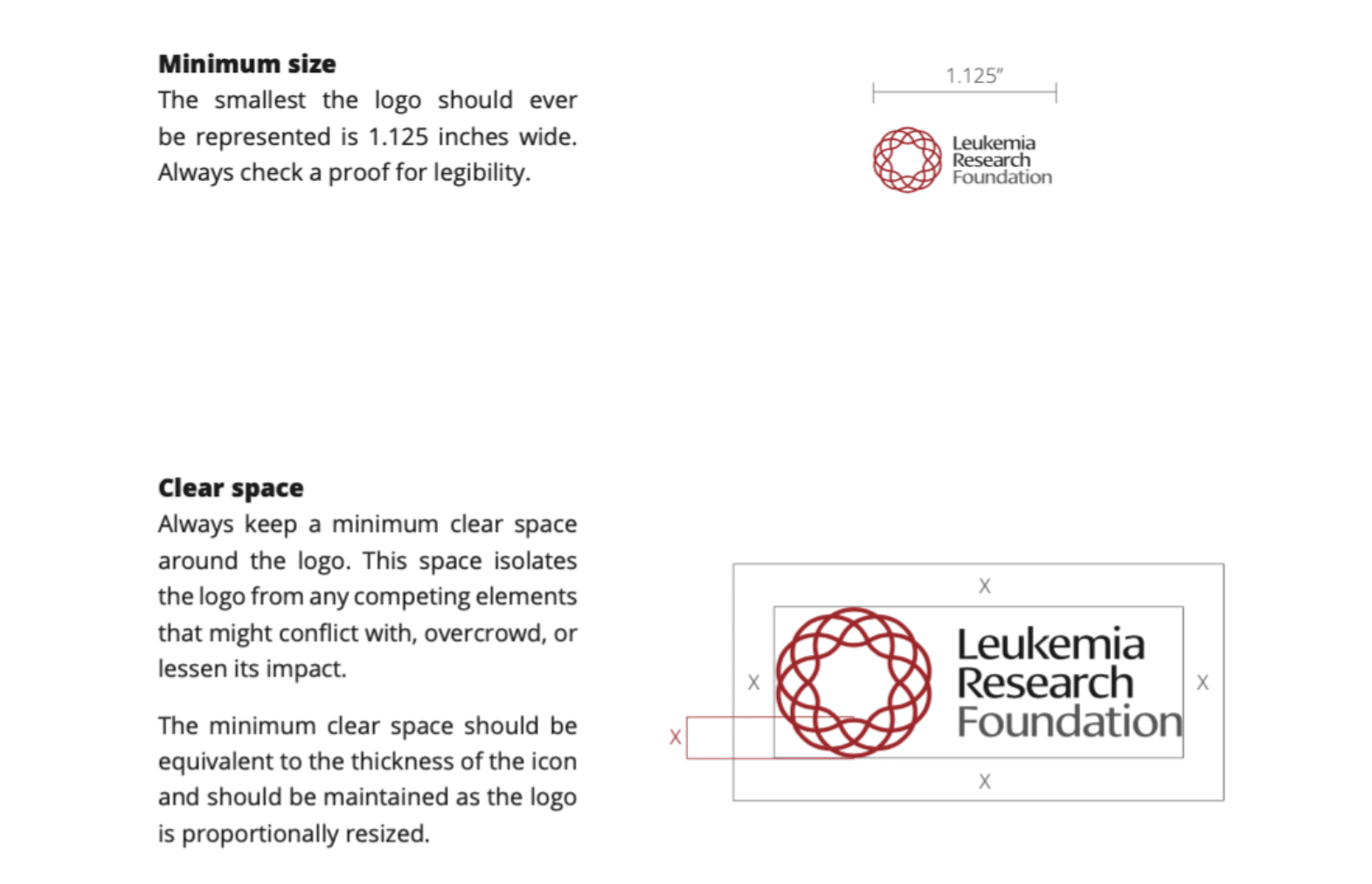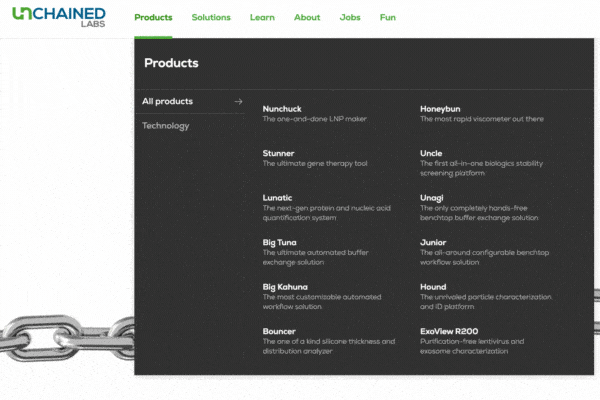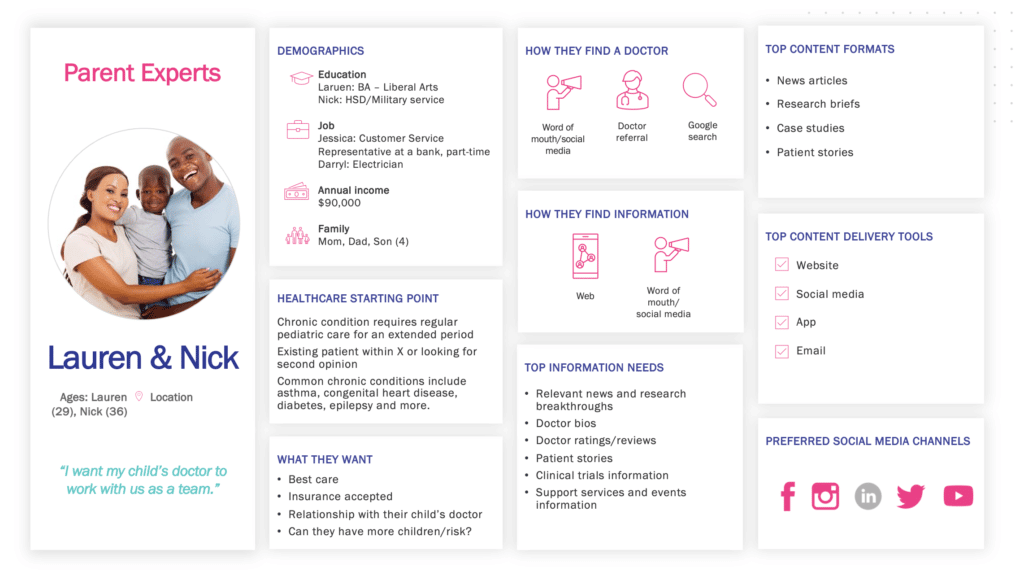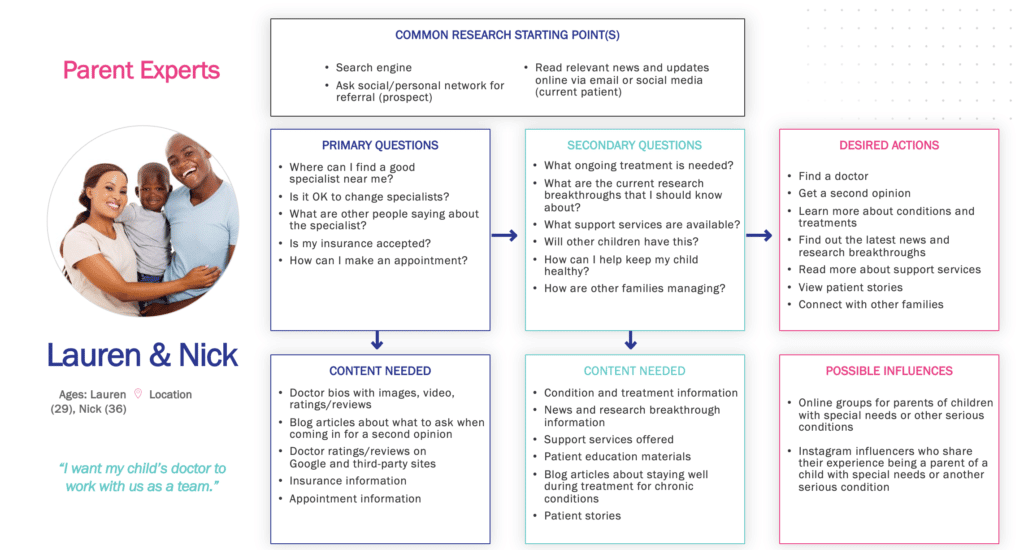
Content style guides are like the potato mashers in your cutlery drawer. You know it’s there, it peeks out to say hi when you open the drawer, but you rarely use it. (Apologies to any potato masher lovers out there.)
But style guides should be more like your spatula or peeler — something essential that you use every day. Style guides are a critical part of content governance. Governance across the web is vital because we want our users to have a consistent experience throughout our digital properties.
A style guide ensures that your brand’s presence is consistent and recognizable across all channels.
What’s Below:
- What should a content style guide include?
- 10 essential elements of a style guide
- Two newest style guide elements: inclusive and accessible content
- How to create a brand style guide
What should a content style guide include?
Your brand style guide needs these important sections, at a minimum:
- Style and formatting
- Voice and tone
- Punctuation
- Grammar and spelling
- Brand guidelines
- NEW: Diversity and inclusion guidance
I lay out clear brand guidelines, including the 10 essential elements and new information on diversity, inclusion and accessibility. And if you already have a style guide, dust off the covers, crack it open and make sure it contains these elements. Feel free to add any that you’re missing. Style guides are living documents that need frequent updates.
Ready to spatula-tize your style guide? Let’s go.
The 10 Essential Elements of a Style Guide
Updated November 2022
1. Your brand’s story
Before diving into the details of how to write for your organization, make sure the guideline users understand your brand. What does your company stand for? This section should cover:
- Positioning
- Brand values
- Mission
- Vision
- Purpose
Nemours Children’s Health does this with flying colors. Their brand guidelines explain these bullet points and their brand narrative. They also explain why these details matter, as an effort to “encapsulate the strategic vision of the organization and the meaning behind Well Beyond Medicine. The guidelines provide context and a meaningful, emotional connection between Nemours and all stakeholders.”
2. Grammar rules
Most corporate style guides use short paragraphs to direct writers to other style guides for grammar and punctuation rules. But there are basic grammar rules that people ALWAYS get wrong — even professional writers. So include three to four pages on some basics instead of sending writers elsewhere for direction. For example, include the differences between commonly misused words like:
- Affect/effect
- Which/that
- Bad/badly
- Complementary/complimentary
And make it clear how your organization spells “healthcare”: two words (health care) or one word (healthcare). Call it out in the guidelines, so everyone is on the same page.
Consider adding grammar changes to your brand guide when a major style book does. If you use Associated Press (AP) Style, you might note when it gives new guidance, like using “they” as a singular pronoun.
3. Actionable examples
Bring the grammar guidelines to life by adding real examples. Write out a sentence in the unacceptable format, then include a correct version. Our Aha Media style guide includes tangible examples. These sentences ensure our writers have clear direction on what we mean by each grammar rule.
Example:
How to turn a simple series into a bulleted list
❌ No: When you come for your evaluation, you will meet with your team, including cardiologists, cardiac surgeons, interventional cardiologists and cardiac anesthesiologists.
✅ Yes: When you come for your evaluation, you will meet with members of your team, including:
- Cardiologists
- Cardiac surgeons
- Interventional cardiologists
- Cardiac anesthesiologists
We also emphasize plain, clear language at Aha Media. This means writing direct sentences with active verbs and using vocabulary that’s familiar to a wide audience.
This doesn’t mean we suggest “dumbing down” the content or leaving out complex content.
A comparison, from Aha Media’s style guide:
❌ No: Folate is an important nutrient found in our diets in fruits and vegetables that has an important role in DNA methylation and synthesis.
✅ Yes: Folate, an important nutrient found naturally in fruits and vegetables, has an important role in healthy cell growth. Folic acid is the synthetic, or man-made, version of folate. (Note that you don’t have to leave out the word “synthetic.” Just provide a brief explanation.)
4. Punctuation
Punctuation can stir some serious passion: Consider the Oxford (serial) comma.
Nearly every writer has a strong preference. They might be #TeamOxford like the Chicago Manual of Style and never go without the serial comma. They might come from a journalism background and stick to AP Style, which doesn’t use it. But your style guide needs to make it clear whether you use the Oxford comma (Aha doesn’t, but we’ve got devotees on both sides).
Give your content creators clear direction, so any writing that comes from your brand identity is consistent. And if your brand follows a particular writing style, such as AP Style, call that out within the style guide. Writers can turn there for clarification, details or other questions.
This is how UCLA Health explains the use of em and en dashes in their brand style guide:
Em dash (—) and en dash (–) — An em dash is roughly the length of a lowercase letter m and is generally used to replace colons, commas, hyphens, semi-colons and parentheses. Our style includes a space on either side of em dashes.
- Example: Ronald Reagan UCLA Medical Center — an academic medical center in Los Angeles — is respected around the world for research and patient education.
An en dash is roughly the length of a lowercase letter n and is typically used to denote a span of time or in the place of a colon to create compounds (see example below). Follow these guidelines:Use em dashes:
- Abrupt change: To denote an abrupt change in thought or an emphatic pause.
- Series within a phrase: When a phrase that otherwise would be set off by commas contains a series of words that must be separated by commas.
Use en dashes:
- To create compounds: For example, the California – Mexico border.
- To denote a span of time, if space is limited: For example, Monday – Thursday or 9 – 11 am. In all other cases, use “to”: Monday to Thursday.
5. Brand Identity
You may think that branding guidelines (like design and use of logo) belong in a separate document. But it’s best practice to bundle both written and design style elements. Marketing has become an increasingly versatile workforce, where digital practitioners are often responsible for writing, graphic design, social media and website maintenance. Because of this, branding guidelines within a traditional content style guide have become the norm.
At a minimum, this section should include the brand’s:
- Logo usage
- Color palette
- Typography (acceptable fonts and sizing )
The Leukemia Research Foundation’s Brand Identity Guide shows content creators the specific requirements for logo usage, color palette and typography. It also gives visual do-and-don’t examples of logo usage.
6. Voice and tone
This section is important for establishing and maintaining a consistent brand personality, yet so often overlooked. Knowing how to write a redirect page versus a sign-in page are two different talents. Style guides can help with this by saying, “This is how we say it” and “This is NOT how we say it.”
Here’s an example from the University of Utah Health writing guide’s sections on tone and voice:
“To use our tone correctly, it can also help to think about ‘this but not that’ adjective lists. We are:
- expert but not condescending (to achieve this tone, use active voice instead of passive voice);
- established but not elite (to achieve this tone, use plain language), and;
- approachable but not sloppy or silly (to achieve this tone, use contractions but not slang).
We also use first- and second-person voice to develop a relationship with our audience. Use the second-person voice when possible.
Example: Patients can access their health information by logging into MyChart.
Better: You can access your health information by logging into MyChart.”
In one style guide I wrote, I explained why content shouldn’t compare the organization with a competitor. Instead, I described how to elucidate the positioning to differentiate your organization without being forceful or inelegant. Sometimes, what NOT to say is just as important as what TO say.
7. Social media and owned channel guidance
How do you personify your brand’s voice and tone in 280 characters? Well, it had better be in your style guide. How many social media properties are you currently managing? 5? 6? 11? Include distinct instructions for each one. For example, does your brand allow you to say, “Will we C U there?” Note it in the style guide.
Your tone and voice guidelines, along with your brand identity, are important to incorporate into your social media style. You need to think about the overall tone of the channels you use and how they interact with your brand’s identity. For example, LinkedIn takes a more businesslike approach than TikTok. Instagram and Facebook take a friendly and relatable approach that can easily adapt to your brand.
Be sure to include:
- How long should your posts be? Include a word or character count.
- Do you allow slang, emojis, hashtags, acronyms? If you do, be specific about what’s OK and what isn’t.
- What subject matter do you put on social media? Is it all customer-facing, and do you include internal company news? A combination of both? What sort of photos/graphics/illustrations are allowed?
8. Naming conventions, titles, degrees
Because I write so much in the healthcare space, I can’t tell you how many times I have encountered MD and B.A. within the SAME biography. Are you sticking with periods or not? What about when a link to a page on the website says, “The Program for Highly Functional Children,” but the page title says, “Your Gifted Child”? Consider creating a cheat sheet for naming conventions. They’re often a glaring mistake when used incorrectly.
Nemours Children’s Health does this well in its brand guidelines document. They explain how to correctly name their master brand (Nemours Children’s Health), as well as:
- Different regions (Nemours Children’s Health, Delaware Valley)
- Clinical departments (Nemours Children’s Orthopedics)
- Locations (Nemours Children’s Hospital, Florida)
Companies with an array of offerings also need definitive style guidance on how to refer to their products — they don’t want content creators referring to their innovations by the wrong name.
Example: Zoll Medical Corporation’s Style & Trademarks Guidelines also lays out clear naming convention advice to its content creators.
Naming conventions are essential when you have unusually creative product names like biologics and gene therapy tools supplier Unchained Labs does.
9. Customer segmentation and audience description
So many organizations have customer segmentation information, but they don’t bring those customers to life. Give them a name, a profession, a family, pastimes, interests and social groups. Connecting to an actual persona rather than data on a page helps writers and publishers envision who they’re talking to. Knowing who you’re creating content for encourages more engagement.
You can see the power of personas and audience understanding for yourself. When we created personas for Geisinger Health System as a part of its editorial toolkit, its website and social media channels saw explosive growth. See our process and the full results in the case study.
And take a look at an example persona from a past Aha Media Group project.


10. Last published
Style guidelines change often. The widely used AP Stylebook usually causes at least one collective die-hard editor gasp per update. Remember % replacing percent in 2019? And if your content style guide follows the principles of AP Style, you’ll need to update it at least that often, too.
Revamp and distribute your style guide once a year. Set a reminder on your calendar to review it during a certain month of the year. (Maybe during a slow season, if you have one.) Put the last published date on the cover and every other page too. That tells people they are working with the most current version. And it keeps your copy up to date, conveying a more professional image.
Two Newest Style Guide Elements: Inclusive and Accessible Language
Style constantly evolves, and you need to keep your organization and your content creators at the forefront of major shifts.
The two newest areas to consider when you create your brand style guide are diversity, equity and inclusion (you’ll often see this abbreviated as DEI) and accessibility.
People from diverse backgrounds, different races, ages, genders and abilities need to see themselves reflected in healthcare content. If they don’t, they’re less likely to feel your organization cares about people like them. That translates to less trust and a lower likelihood they’ll look to you for healthcare information or services when they need them.
Familiarize yourself with an array of style guides for ideas of what to include in your DEI sections. There also are specialized style guides and recommendations that make great resources, too.
Inclusive language: The building block of DEI content
Aha emphasizes inclusive language in content addressing groups of people who have been historically marginalized. These groups include people of specific races, religions, ethnicities, sexual orientations, gender identities and abilities.
Creating style guide content on diversity, equity and inclusion means considering areas such as:
- Language and terminology: Explain the exact words you use when you talk about diverse groups. The Associated Press 2021 DEI style update, for example, covers topics including race, gender, sexual identity and disability status.
- Photos and images: Include recommendations on depicting diverse people in your marketing — including different races, ages, ethnicities and abilities — which makes readers from more groups feel more included.
- Pronoun usage and gender-inclusive language: Guide your content creators to use pronouns matching a person’s gender identity. Use gender-neutral language (humankind instead of mankind, for example). Many healthcare providers also use the terms assigned male at birth (AMAB) and assigned female at birth (AFAB) instead of man and woman.
- People-first language/identity-first language: Create or link to guides on referring to health conditions and people with disabilities. The Disability Language Style Guide by the National Center on Disability and Journalism is a good place to start. It explains the nuances of language around disabilities and gives examples of dated and offensive words.
Cleveland Clinic recently created an extensive, detailed DEI style guide to add to its overall content style guidance. Its main consideration was its patients.
At Cleveland Clinic, we put patients first. And that extends to the people who read our health information online. We update our style guide regularly to reflect the evolution of language and ensure that the words we use reflect our organizational values of empathy and inclusion.
Jenn Lonzer, MA
Health Library Manager, Cleveland Clinic
For example, a Health Library article formerly titled “Diabetic Foot” became “Diabetes-related Foot Conditions.” Anywhere the term “diabetic,” relating to people, appeared in the text, it became “people with diabetes.” And “weight problems” became the specific BMI range with overweight and obesity as medical conditions.

These new considerations in style interweave and overlap — and it’s helpful to see how it works in practice. The Associated Press added a new chapter on inclusive storytelling to its style guide, which offers advice on integrating inclusive language.
Accessible content
How do your audience members with disabilities interact with your content? Are your web pages set up with screen readers in mind? Or will people with low vision miss out on the content? They might if you link to a PDF that appears as an image rather than readable text, for example.
Making content accessible includes captioning video segments so people who are deaf can also understand the message. It also includes composing content for people who are neurodivergent.
Creating accessible content is not just good for your clients and patients, but it also may be a legal requirement for your organization. Section 508 of the Rehabilitation Act of 1973 got an update in 2018 that addresses potential discrimination against people who are disabled as it relates to technology and content.
The U.S. General Services Administration provides an extensive guide to creating accessible content that’s useful whether or not your organization is subject to the law.
How to Create a Brand Style Guide
Creating brand guidelines is one of the most important steps to take before producing new content. And it’s essential if you’re working with a content marketing agency or freelance writers and editors. Invest time, energy and resources into creating it the right way the first time.
Follow these steps to create a content style guide:
- Research and collect brand guide inspiration from other sources, like our examples above.
- Draft an outline of key areas to cover in the content style guide.
- Create a list of stakeholders to include in a brand guidelines conversation, such as:
- Marketing and communications team members
- Staff with deep understanding of your audience, like customer service reps or patient advocates
- Leadership, including the CEO or president (if applicable)
- Your DEI team (if you don’t have one yet, make sure you involve stakeholders who will provide diverse input)
- Gather the stakeholders and discuss the main components of the content style guide, including voice and tone, brand story and audience.
- Write the brand guidelines.
- Distribute your style guide to the marketing and communications workforce within your organization.
- If your team isn’t professionally trained writers, explain how to use the style guide, why it’s important and how to access it (shared drives, Intranet, Google docs, printed once a year, etched on stone tablets, etc.)
- Revisit and refresh the guidelines every year.
I can’t emphasize the importance of a content style guide enough. (Can you tell??) But if the thought of creating brand guidelines overwhelms you — yet you know you need them — my team can take the weight off your shoulders. We can manage the entire process for you, including interviewing key stakeholders, and create the brand guidelines that make you proud.
Contact us for more information about creating your content style guide or learn about our other healthcare content marketing products and services.
All style guide examples in this blog were generously provided by clients of Aha Media Group.








